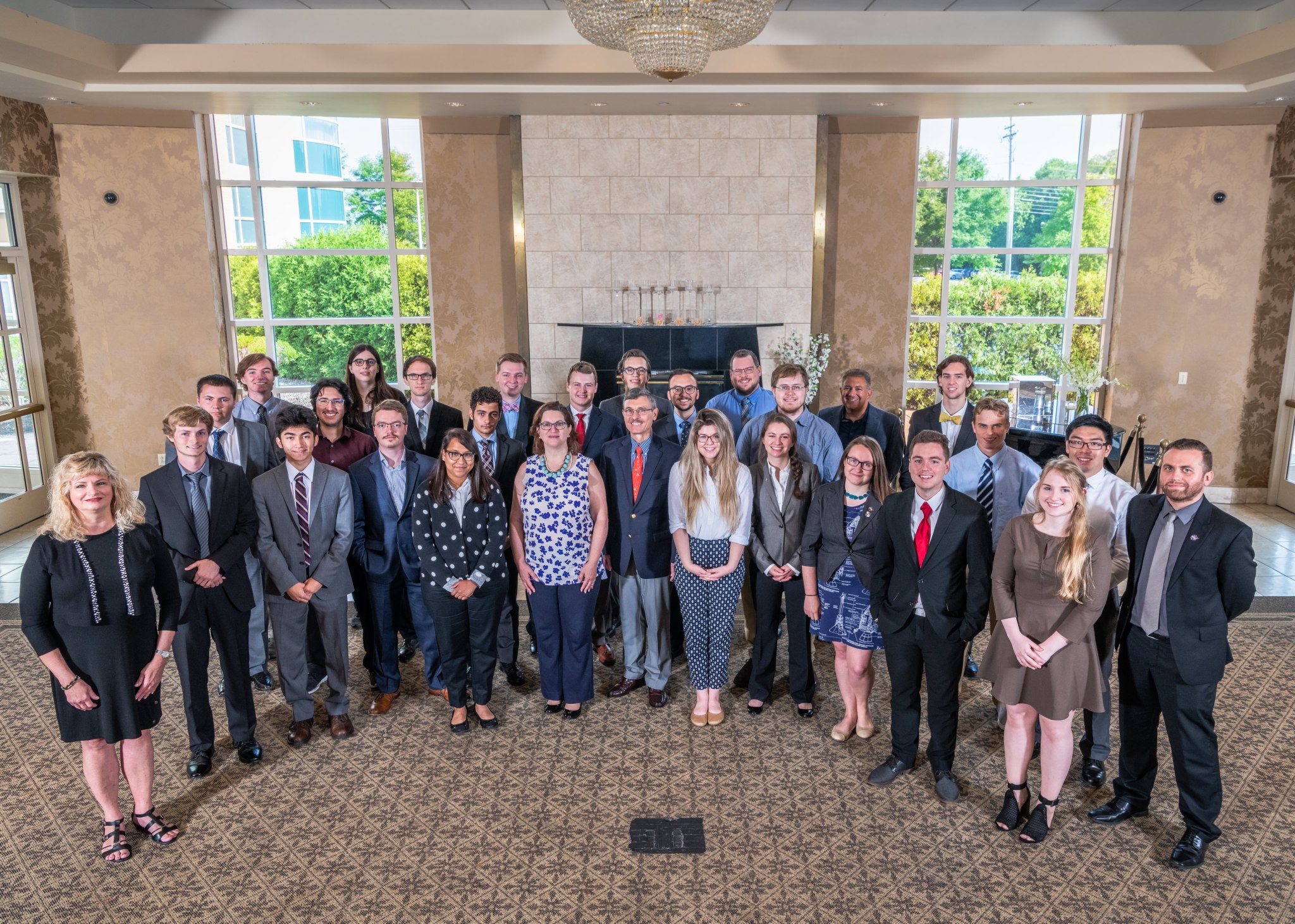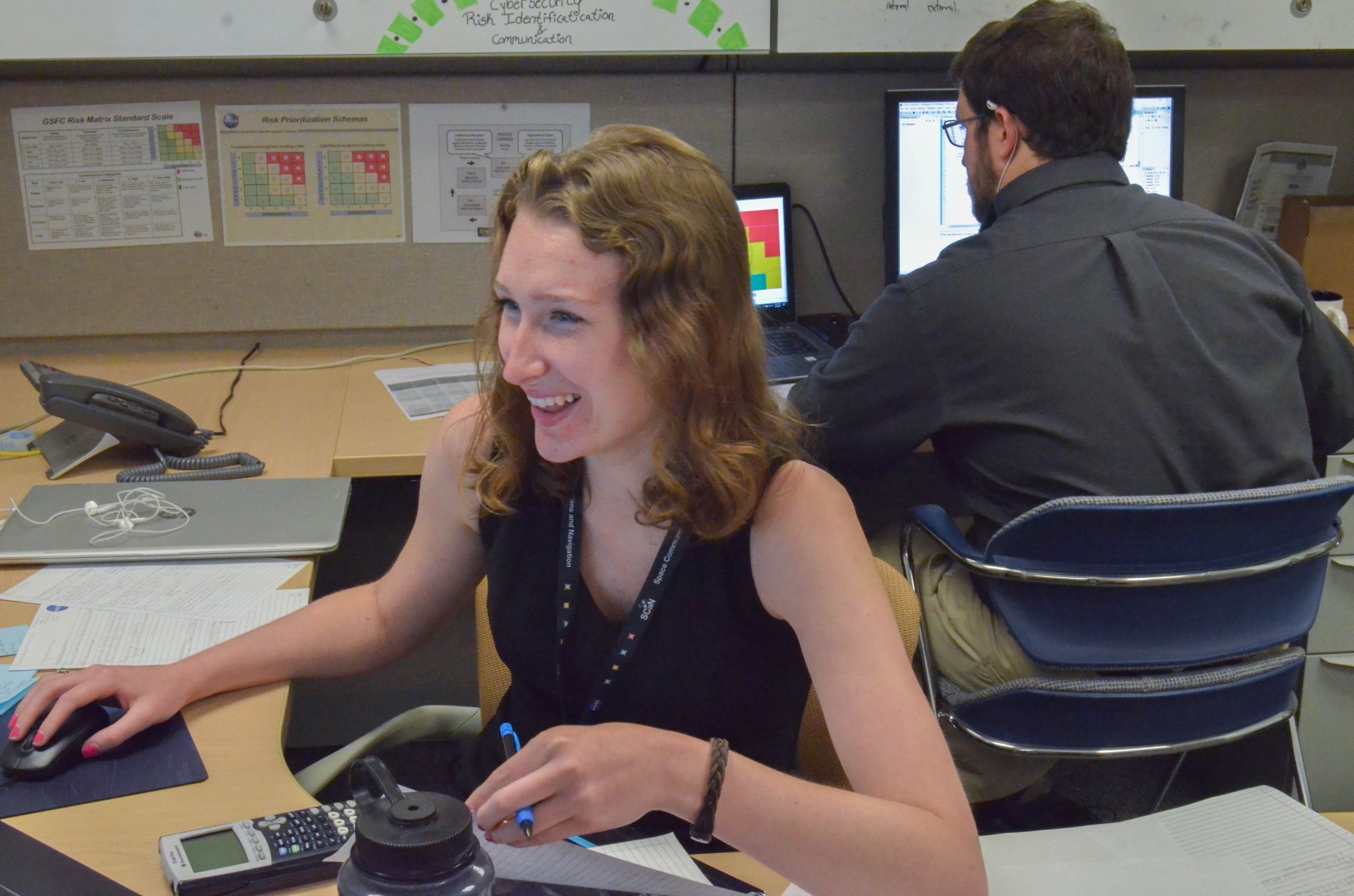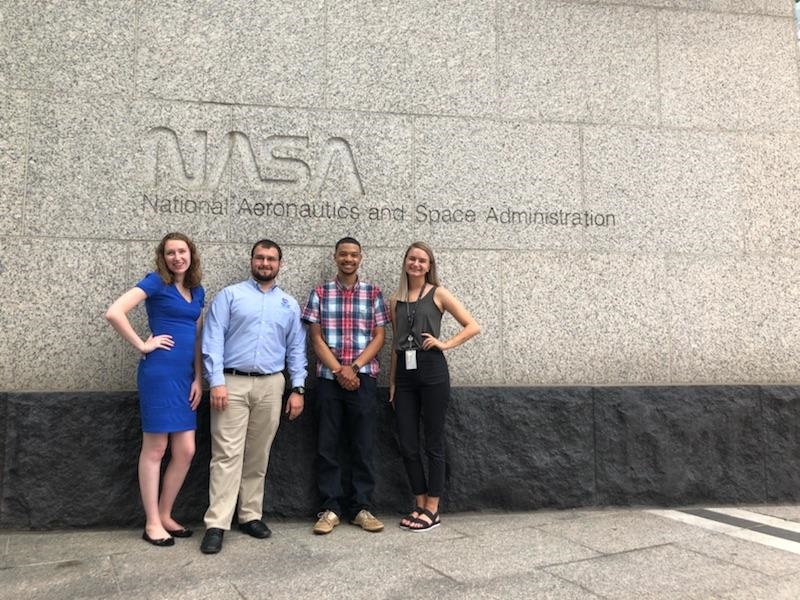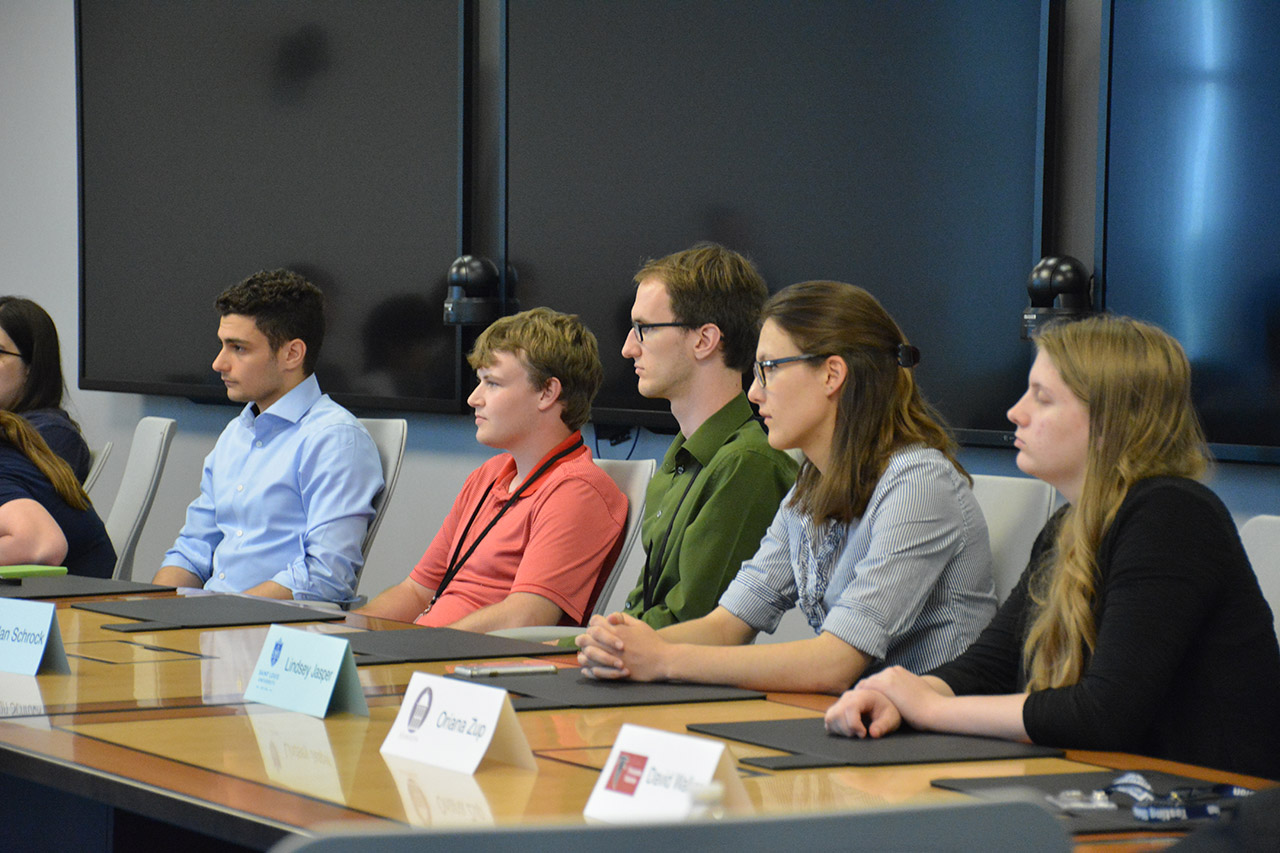Throughout space, hundreds of satellites are orbiting Earth and other celestial planets, continuously collecting data about the vast universe. Communicating with these satellites is a complex and evolving challenge.
As the U.S. prepares for human travel to the Moon and beyond and NASA missions venture farther into the universe than ever before, the Space Communications and Navigation (SCaN) program must create new and innovative ways to communicate effectively across vast distances. Students from across the country participate in the SCaN Internship Project (SIP), helping to develop new technologies and concepts to meet these complex challenges.
Innovative Projects
More than 60 SCaN interns, located at NASA’s Goddard Space Flight Center in Greenbelt, Maryland, and Glenn Research Center in Cleveland, Ohio, applied their learning this summer to projects ranging from deep machine learning to challenging humankind’s understanding of quantum physics to even optimizing business and outreach processes.
In one such project, interns Danielle Fieseler and Tyler Williams at Goddard analyzed how NASA communicates cybersecurity risks, which can pose threats to NASA systems in today’s climate. Comprehensively communicating these risks is vital to understanding them and implementing better practices. Fieseler and Williams developed a communication hierarchy model that identifies areas where cybersecurity risks are communicated to individuals who are responsible for the risk, but who do not necessarily have the technical background to understand the implications of the risk. They used industry and project management formulas to convert the cybersecurity risks to a 5×5 risk chart, which is commonly used at NASA.
Their work could potentially have far-reaching impacts as the agency addresses continuously evolving cybersecurity risks, such as hacking. This project was so impactful that the Goddard center director, Chris Scolese, and representatives from the SCaN program office at NASA Headquarters in Washington met with Fieseler and Williams to learn about their discoveries and recommendations.
Impacting Real NASA Missions
The quality of the interns’ work speaks to the rigorousness of the program and the high expectations set by program stakeholders. However, the program is also intended to support the interns in their professional development. SIP program coordinators help the students elevate their work and professional experience through 10 weeks of events, trainings, and workshops. Each intern is also paired with a mentor to help develop their deliverables. This enables them to gain unique insight into the topics they study in their degree programs.
Benjamin Child and Jonathan Dietz, both pursuing physics degrees at Worcester Polytechnic Institute and Harvard University, respectively, were paired with two mentors and spent their summer focusing on a quantum optics project at Glenn. NASA is currently in the process of developing a secure space-based quantum communications network by encoding information on the single physical component of light, which are called photons. Child and Dietz performed quantum interference experiments to confirm the entangled nature of source-emitted photons and determined the required brightness level for the sources. Working alongside their mentors, they helped develop state-of-the-art, space-flight compatible entangled photon sources and characterized high efficiency superconducting single-photon detectors.
Unique Features
SIP is unique in that many of the interns come back for successive summers to further develop and mature their projects.
SIP is a fantastic opportunity for both students and NASA."
tIM gALLAGHER
Glenn Research Center SIP Coordinator
“SIP is a fantastic opportunity for both students and NASA,” said the Glenn SIP coordinator, Tim Gallagher. “A great aspect of SIP is that nothing is practice-based, we gear all work toward real NASA missions and these interns having a lasting impact.”
At the end of this year’s program, the interns presented their work to upper-level SCaN management. Throughout the summer, the interns are trained meticulously in technical presentation skills; they learn how to communicate their work in a concise and meaningful way so that they can convey the impact of their projects. These presentations allow the interns to showcase their accomplishments and give SCaN representatives the opportunity to engage with the students.
“Each intern accomplished something of direct benefit to our program, and represented SCaN and NASA well,” said Barbara Adde, SCaN policy and strategic communications director, after this year’s presentations. “We are always excited to attend the final presentations; it gives us a chance to connect with the interns and to see our STEM engagement in action.”
This year, SIP’s goal was to make the program more visible to the public through numerous community engagement activities and social media tactics. SCaN worked with the interns’ universities to increase program awareness so that other students can learn about SIP and apply in the future. SIP, while generally geared towards science, technology, engineering and mathematics (STEM) students, also hosts a number of business interns to work on financial and other business projects, and communications and graphics interns to help NASA develop visually dynamic and interactive media.
Joining the Workforce
Some of the most successful interns get the opportunity to join NASA as full-time employees or as contractors after they receive their degrees. Reese Patillo, an animation intern at Goddard this summer, was hired through ASRC Federal InuTeq and contracted to NASA following the completion of the program.
“The SIP program is the true definition of passion, collaboration and innovation,” said Patillo. “Through this program, I was able to strengthen my technical and collaboration skills in animation and graphic design. The people that I have networked with, the opportunities given to me and the projects that I have worked on during SIP confirmed, for me, that the animation and graphic design industry is exactly where I need to be.”
Adam Gannon, a former SIP Intern, worked at Glenn in 2015 as a SCaN intern. After his summer internship, he was accepted as a Pathways intern and in October 2018, Adam joined the NASA Glenn workforce as a research electronics engineer.
“My SCaN internship greatly exceeded my already high expectations,” said Gannon. “I learned from some very talented engineers as we developed a software-defined radio experiment to improve the reliability and efficiency of space-Earth communications. I had the chance to spend the last week of my internship in the Telescience Support Center actually controlling our experiment on the International Space Station, how cool is that? In addition to professional development, my internship experience reaffirmed my desire to work at NASA, which led to applying for the Pathways program and recently accepting a conditional offer for full-time employment after graduation.”
Spanning from Alaska to Puerto Rico, these interns were a diverse group of innovative thinkers and creators. The work produced by these interns has helped drive NASA towards the future of space communications. Each intern came to Goddard and Glenn with complex ideas and solutions, ready to work on the challenges associated with space communications and navigation.
To learn more about SIP, please visit: https://www.nasa.gov/directorates/heo/scan/communications/outreach/internships
To apply for future internship opportunities, visit: https://intern.nasa.gov/






























